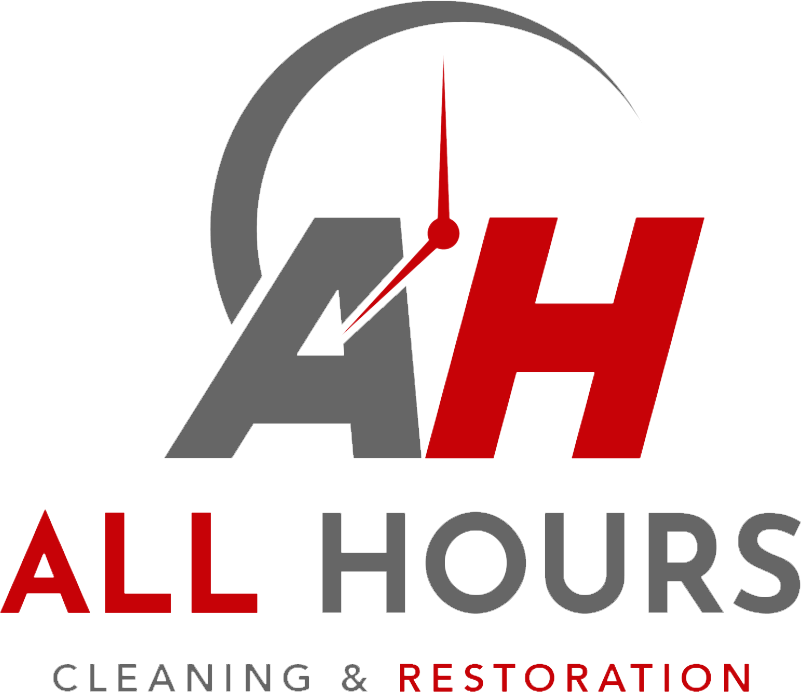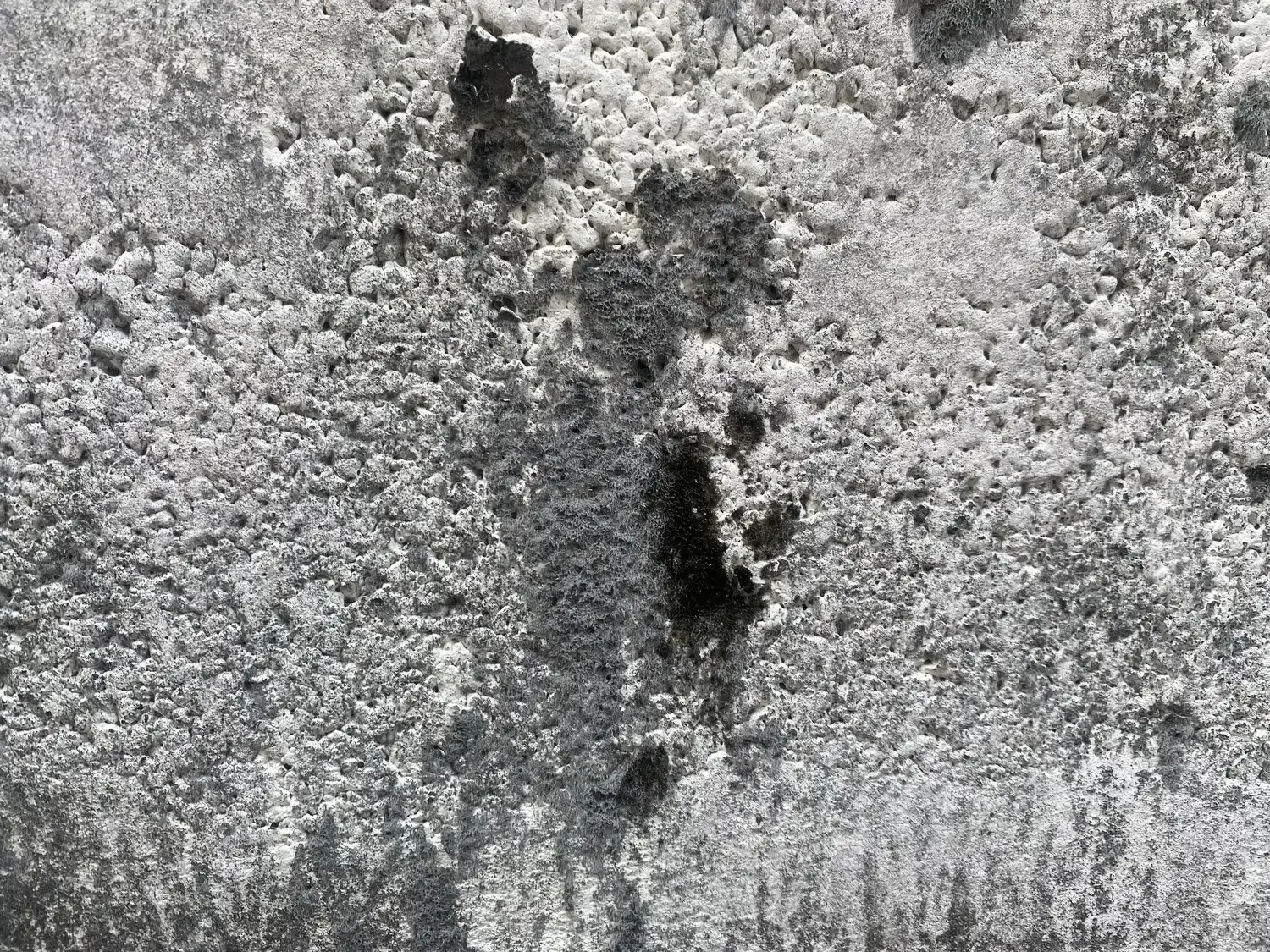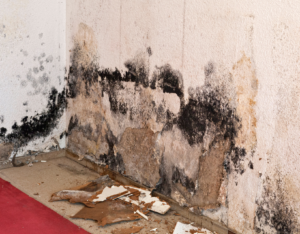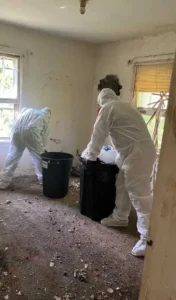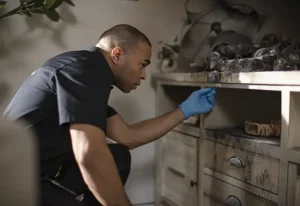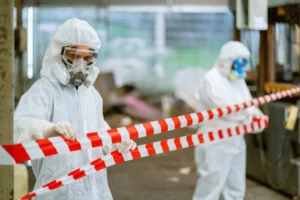Fire can be devastating, not only because of the health hazards it presents but also the lasting structural damage it can leave behind. Concrete, though known for its durability and resistance to fire, is not immune to damage.
This guide provides comprehensive insights into how fire affects concrete, how to remove burn marks from concrete in a step-by-step cleaning process, and why professional intervention is crucial.
Key Takeaways:
- Fire damage subjects concrete to changes such as discoloration, spalling, and cracking reducing its structural integrity.
- Thorough professional cleaning can eliminate burn marks off concrete and render it cleaner to its pre-loss state.
Table of Contents
- Introduction
- How Does Fire Damage Concrete?
- Equipment Required to Clean Fire Damaged Concrete
- Steps for Cleaning Fire Damage Concrete
- Safety Precautions for Cleaning Fire Damage Concrete
- Why You Must Not Clean Fire Damaged Concrete Yourself
- Contact All Hours Cleaning & Restoration For Effective Fire Damage Restoration
How Does Fire Damage Concrete?
Concrete is a composite material made of cement, water, gravel, and sand. When exposed to high temperatures, the water inside the concrete vaporizes, leading to internal pressure and spalling, where the surface layers begin to crack and flake off.
Additionally, the intense heat can cause chemical changes in the cement, weakening the overall structural integrity of the concrete. Lastly, concrete tends to absorb the soot on its surface leaving behind a lingering smoke odor.
Equipment Required To Clean Fire Damaged Concrete
Cleaning fire-damaged concrete requires specific tools and materials to ensure the job is done safely and effectively:
- Protective Gear— Including heat-resistant gloves, goggles, a respirator, and protective clothing.
- Protective Gear— With at least 3000 PSI, capable of removing soot and debris with high-powered jets of water.
- Non-Metallic Brushes and Scrapers— For manual scrubbing of stubborn areas.
- Trisodium Phosphate (TSP)— A heavy-duty cleaner that helps remove soot and stains.
- PH-Neutral Cleaners (TSP)— Such as sodium bicarbonate to clean the surface and remove traces of harsher cleaning chemicals.
- Buckets and Brushes: For mixing cleaning solutions and applying them to affected areas.
- Vacuum Cleaner: Preferably an industrial model, for removing loose particles.
- Concrete Sealer — It shields the concrete from moisture or other harmful materials that cause deterioration over time.
Steps for Cleaning Fire Damaged Concrete
If you’re wondering how to get burn marks off concrete, here is a step-by-step guide you can follow to bring your it back to life:
1. Damage Assessment
Before beginning any cleaning, closely examine the concrete to determine the extent of the damage. Look for signs of concrete surface damage such as discoloration and structural integrity issues that need professional repair.
2. Preparation
Suit up in all recommended personal protective equipment (PPE) to safeguard against harmful contaminants.
3. Clear Debris
Before the cleaning commences, clear the site of any rubble and maintain clear pathways for an efficient cleaning operation.
4. Initial Cleaning
Remove loose debris and soot with a pressure washer. For areas that are not heavily damaged, a high setting may not be necessary.
5. Scrubbing
Apply a mixture of soot-formulated cleaner and water to stubborn stains and soot. Scrub these areas vigorously with abrasive brushes to ensure the cleaner penetrates the porous surface.
6. Rinsing
Thoroughly rinse off the cleaning solutions with clean water from the pressure washer to avoid leaving any residues that could attract more dirt or degrade the concrete.
7. Neutralizing
Clean the area with a pH-neutral cleaner to neutralize any remaining chemical residues, which can be harmful if left unchecked.
8. Drying
Allow the concrete to dry completely. This may take several days, depending on the environment and the extent of saturation.
Safety Precautions for Cleaning Fire Damage Concrete
- Avoid Inhalation— Always wear a respirator to avoid inhaling dust, soot, or chemical fumes.
- Skin and Eye Protection— Use gloves and goggles to protect against harsh cleaners and flying debris.
- Proper Ventilation— Ensure adequate ventilation to prevent inhalation of fumes. Take regular breaks to get fresh air.
- Electrical Safety— Be cautious of exposed wires or electrical installations that might have been damaged by fire.
Why You Must Not Clean Fire Damaged Concrete Yourself
Cleaning fire-damaged concrete might seem manageable, but it involves significant risks:
- 1. Structural Risk— Without proper training, you might not recognize structural damages that could pose safety risks.
- 2. Health Hazards— Fire residues contain toxic substances that pose serious health risks if not handled correctly.
- 3. Inadequate Cleaning— Professional cleaners have access to specialized tools and products that ensure thorough cleaning and restoration, which might not be achievable with DIY methods.
Contact All Hours Cleaning & Restoration For Effective Fire Damage Restoration
For fire damage restoration services you can rely on, contact All Hours Cleaning & Restoration. We have many years of experience in restoring severely fire damaged properties to their former state in record time. Contact us today for immediate fire damage restoration services.
